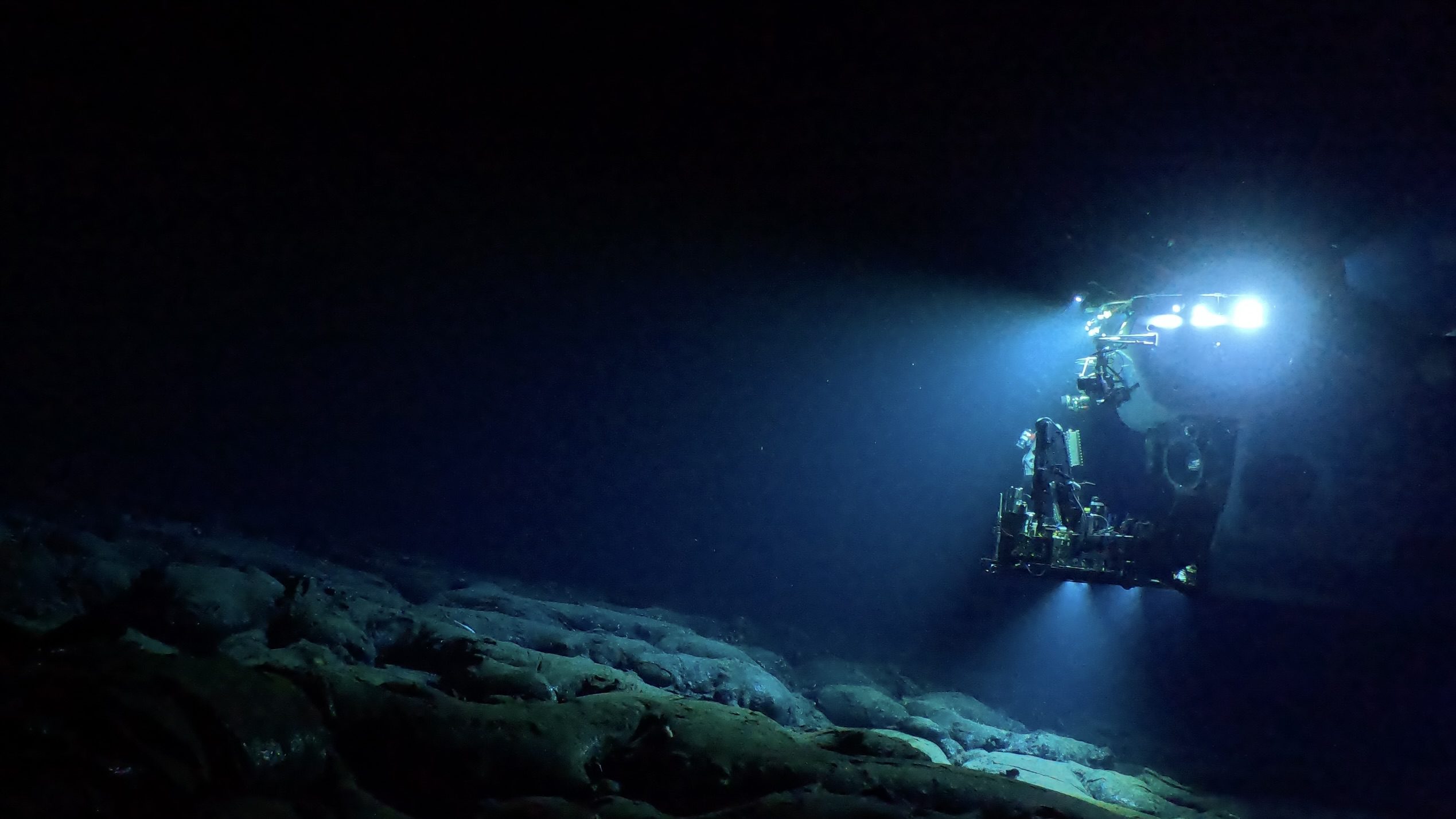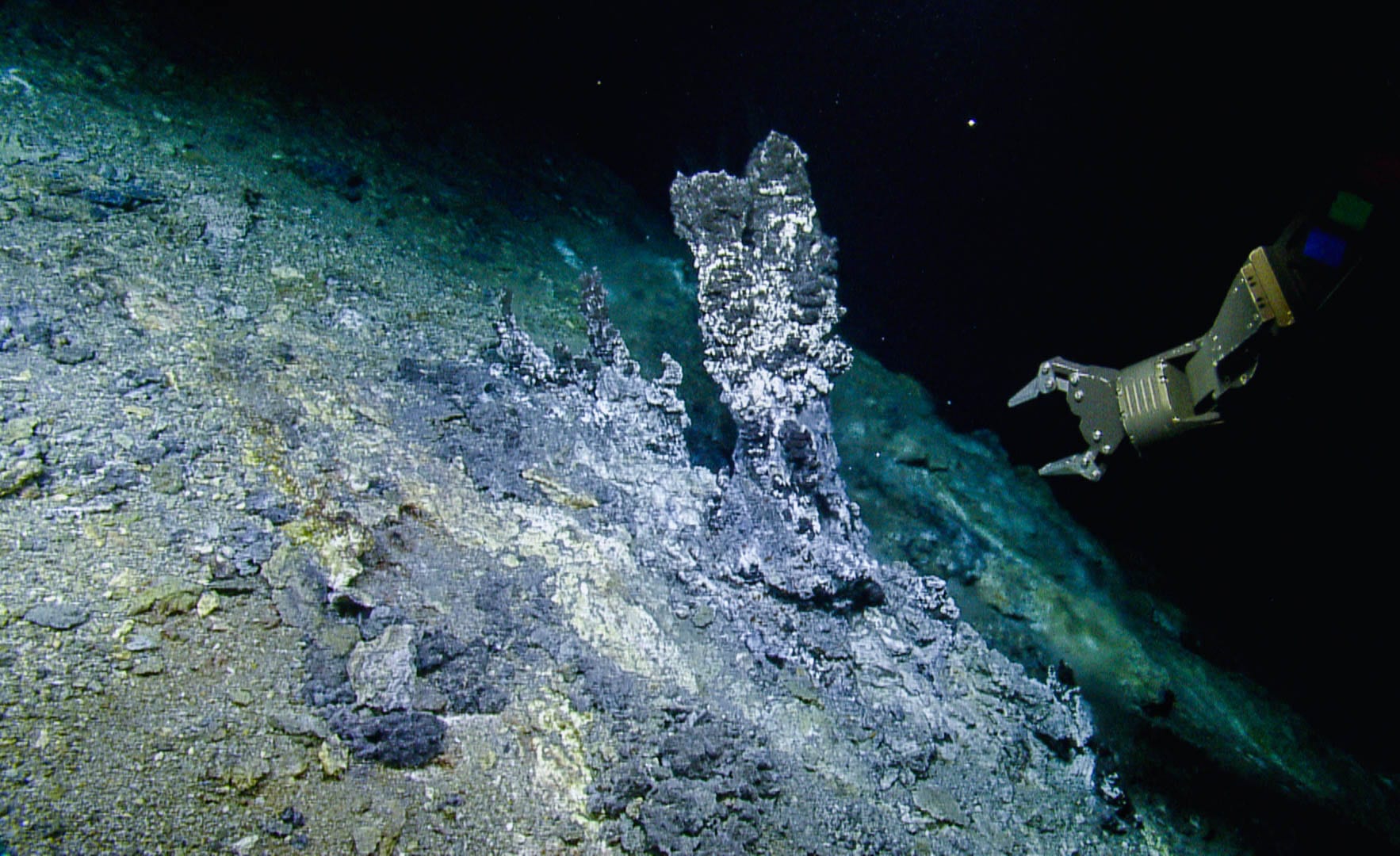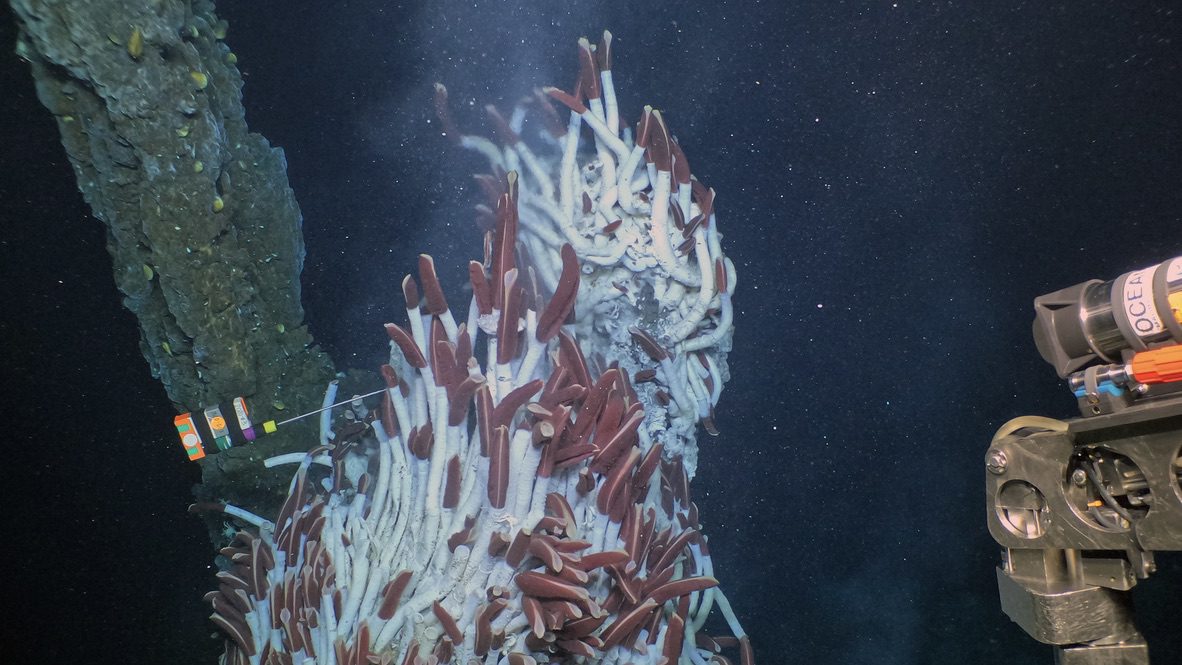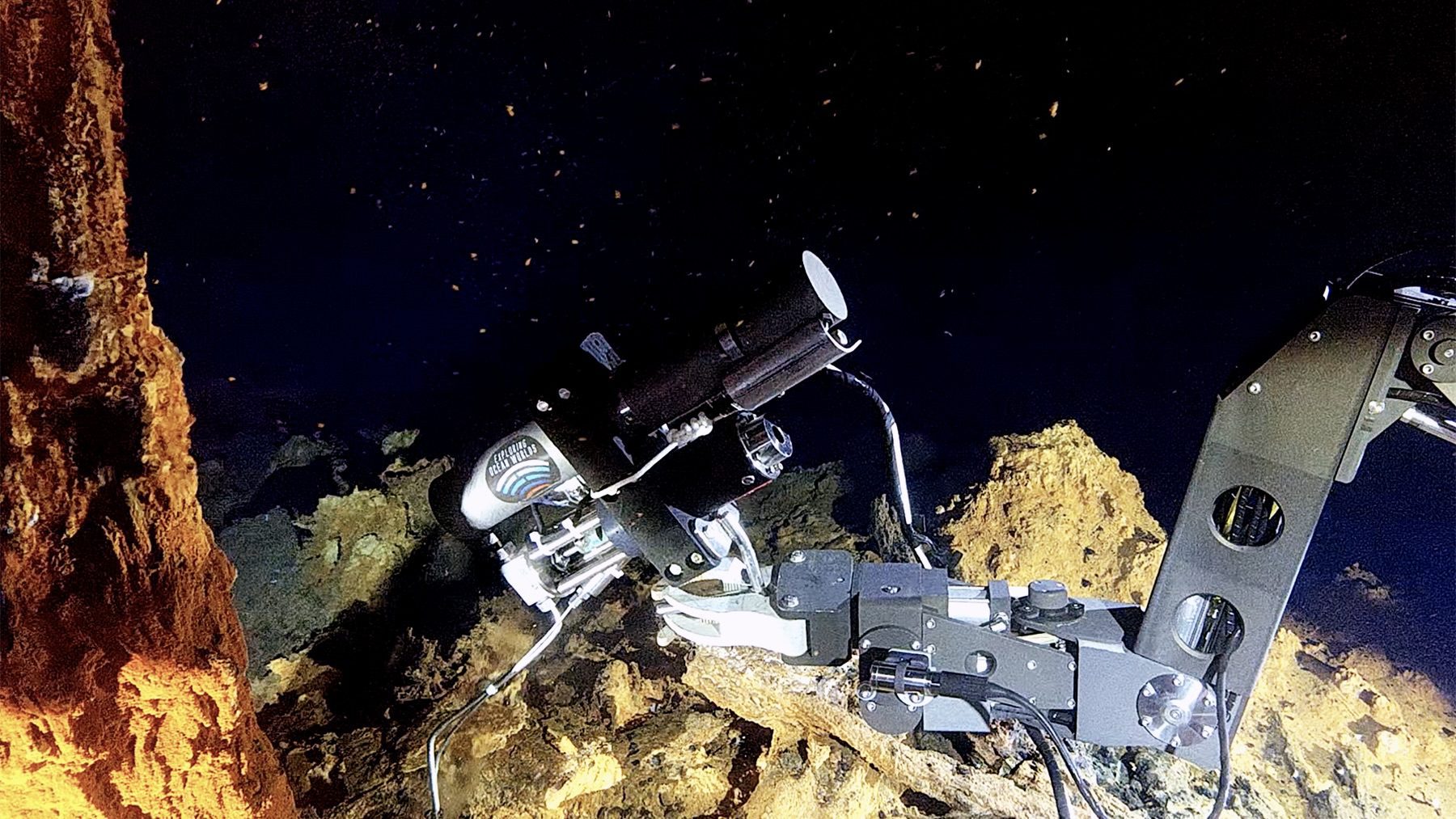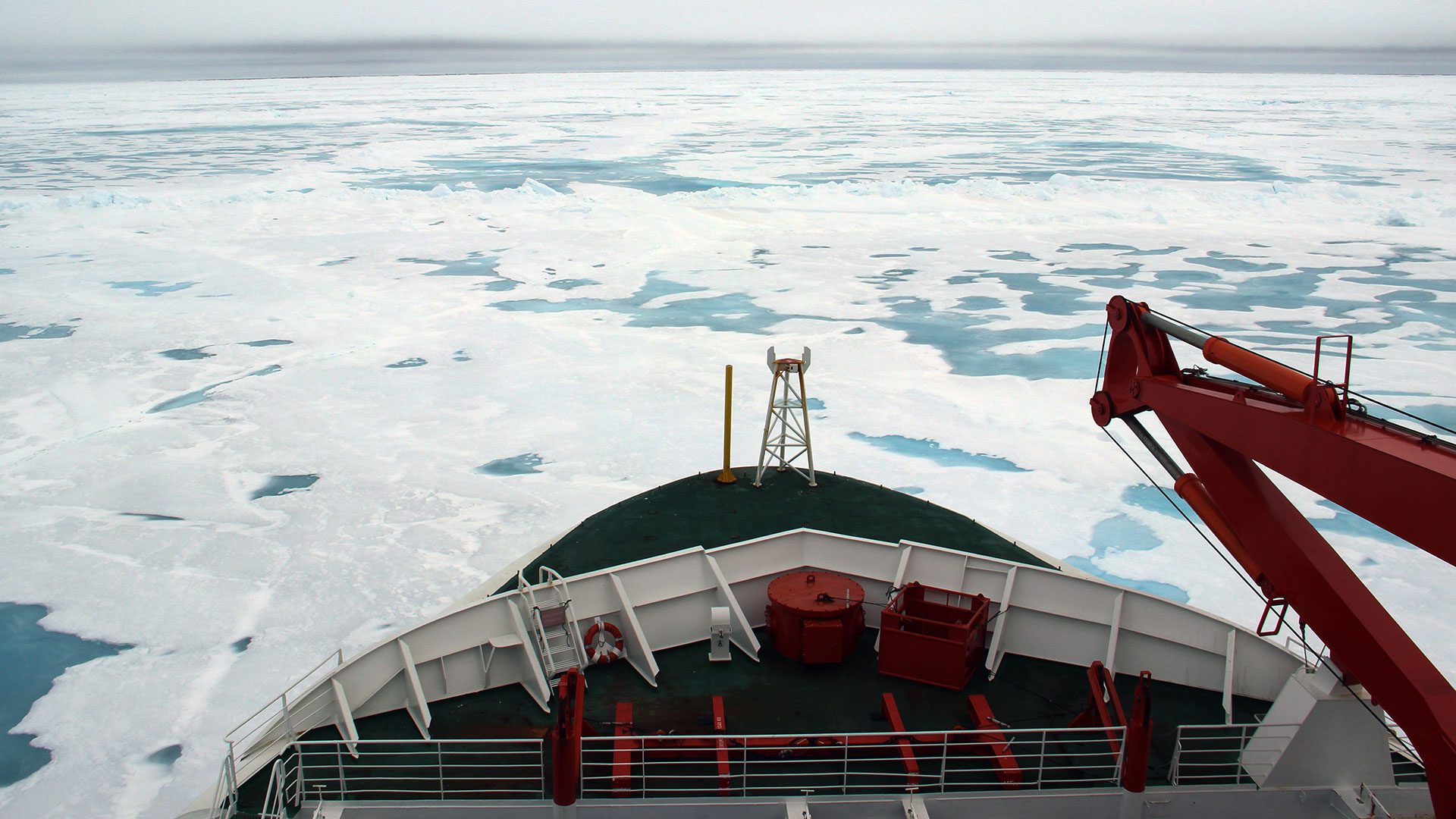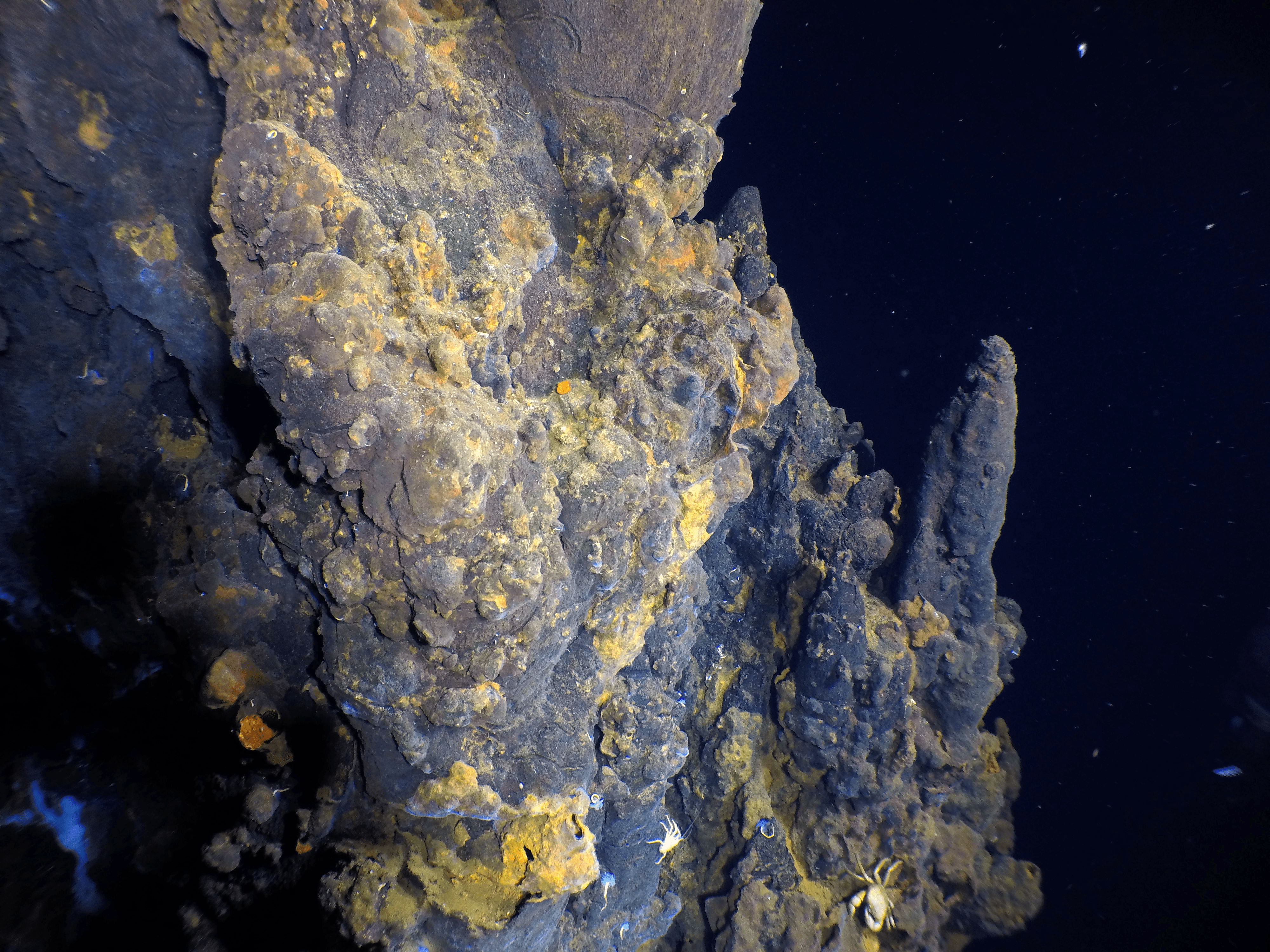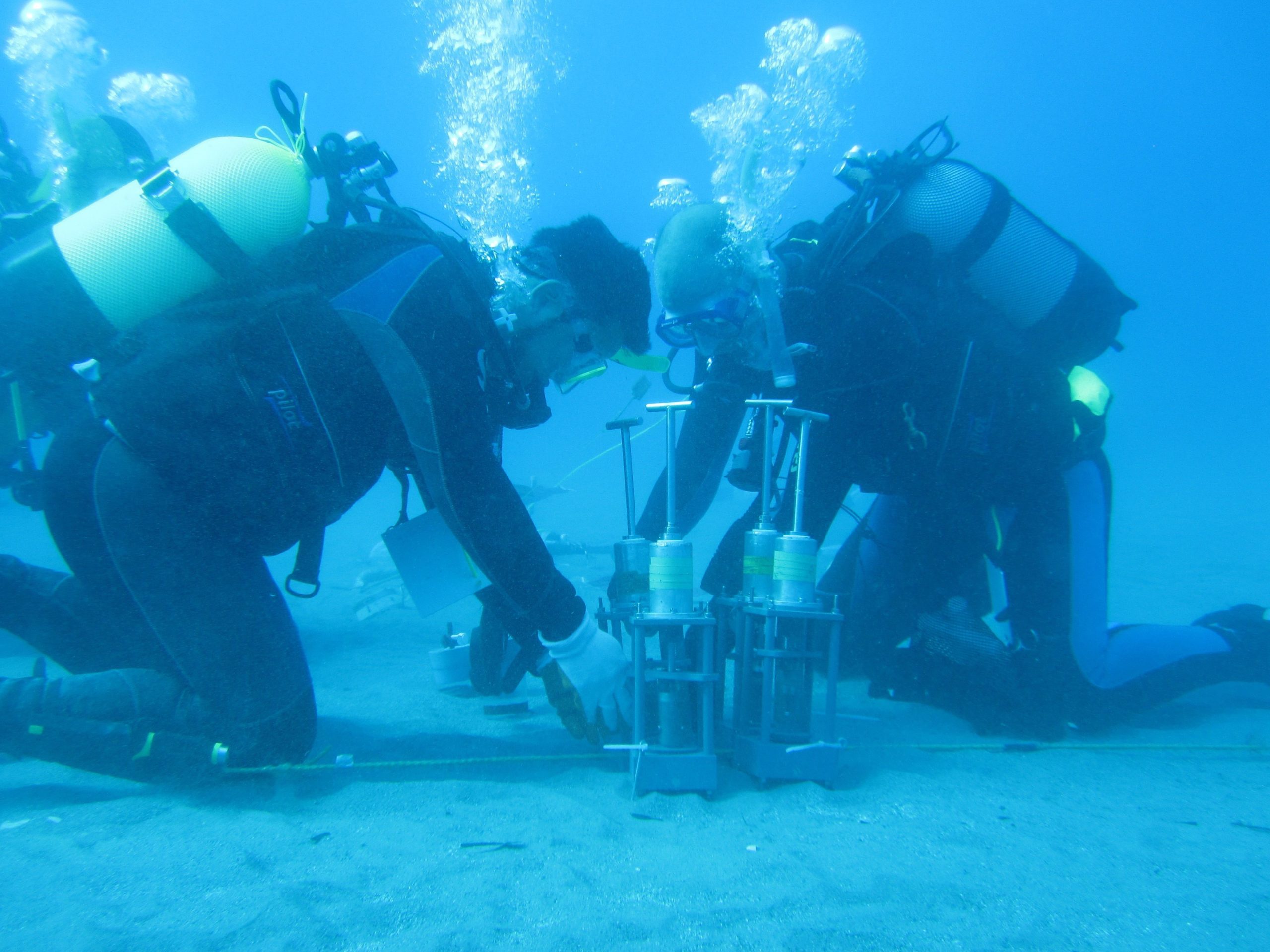News Releases
Five new hydrothermal vents discovered in the eastern tropical Pacific Ocean
Ocean scientists discovered the new deep-sea hydrothermal vent sites on the seafloor at 2,550 meters (8366 feet, or 1.6 miles) depth.
Read MoreStudy Examines the Role of Deep-Sea Microbial Predators at Hydrothermal Vents
Researchers Emphasize the Need for Baseline Information of Microbial Food Webs The hydrothermal vent fluids from the Gorda Ridge spreading center in the northeast Pacific Ocean create a biological hub…
Read MoreMaking Organic Molecules in Hydrothermal Vents in the Absence of Life
In 2009, scientists from Woods Hole Oceanographic Institution embarked on a NASA-funded mission to the Mid-Cayman Rise in the Caribbean, in search of a type of deep-sea hot-spring or hydrothermal vent that they believed held clues to the search for life on other planets. They were looking for a site with a venting process that produces a lot of hydrogen because of the potential it holds for the chemical, or abiotic, creation of organic molecules like methane – possible precursors to the prebiotic compounds from which life on Earth emerged.
For more than a decade, the scientific community has postulated that in such an environment, methane and other organic compounds could be spontaneously produced by chemical reactions between hydrogen from the vent fluid and carbon dioxide (CO2). The theory made perfect sense, but showing that it happened in nature was challenging.
Now we know why: an analysis of the vent fluid chemistry proves that for some organic compounds, it doesn’t happen that way.
New research by geochemists at Woods Hole Oceanographic Institution, published June 8 in the Proceedings of the National Academy of Sciences, is the first to show that methane formation does not occur during the relatively quick fluid circulation process, despite extraordinarily high hydrogen contents in the waters. While the methane in the Von Damm vent system they studied was produced through chemical reactions (abiotically), it was produced on geologic time scales deep beneath the seafloor and independent of the venting process. Their research further reveals that another organic abiotic compound is formed during the vent circulation process at adjacent lower temperature, higher pH vents, but reaction rates are too slow to completely reduce the carbon all the way to methane.
Read MoreCarbon Acts Like Rustoleum Around Hydrothermal Vents
The cycling of iron throughout the oceans has been an area of intense research for the last two decades. Oceanographers have spent a lot of time studying what has been…
Read MoreExplorers to Use New Robotic Vehicles to Hunt for Life and Hydrothermal Vents on Arctic Seafloor
Researchers will probe the Gakkel Ridge during expedition that begins on July 1.
Read MoreNew Technology for New Exploration of Hydrothermal Vents
Advances in undersea imaging systems, the development of new vehicles and instruments, and improved seafloor mapping capabilities have enabled scientists to explore areas of the deep sea in unprecedented detail. …
Read MoreNew Hydrothermal Vents in the Pacific Located and Mapped with Robotic Vehicle
Three new deep-sea hydrothermal vent fields were discovered in September 2004 in the Lau Basin in the western Pacific between Tonga, Fiji and Samoa and were geologically and biologically mapped…
Read MoreScientists Release First Images of Hydrothermal Vents Found in the Indian Ocean
Scientists exploring a remote area of the central Indian Ocean seafloor two and one-half miles deep have found animals that look like fuzzy snowballs and chimney-like structures two stories tall spewing super-heated water full of toxic metals. The findings, released on the Woods Hole Oceanographic Institution’s Dive and Discover Web site (http://www.divediscover.whoi.edu/) were made at the start of a month-long expedition funded by the National Science Foundation. Images and data from the seafloor may provide critical answers to long standing questions about the diversity of life in the deep sea, how animals move from place to place and how the ocean crust is changing. A Japanese team is reported to have discovered hydrothermal vents in the Indian Ocean last fall, but little information has been publicly available.
Read MoreScientists uncover a new way to forecast eruptions at mid-ocean ridges through hydrothermal vent temperatures
A new study reveals fluctuations in temperature of fluids from hydrothermal vents indicate the effects of magmatic and tectonic processes that occur miles beneath the seafloor.
Read MoreNewly published study reveals diversity of novel hydrothermal vent styles on the Arctic Ocean floor
Research offers potential understanding of habitability on ocean worlds in the outer solar system
Read MoreArctic Hydrothermal Vent Site Could Help in Search for Extraterrestrial Life
When scientists discovered a hydrothermal vent site in the Arctic Ocean’s Aurora hydrothermal system in 2014, they did not immediately realize just how exciting their discovery was.
Read MoreHydrothermal field discovered at the East Pacific Rise 9°54’N
A new high-temperature, off-axis hydrothermal vent field on Pacific seafloor at 2550 meters depth was discovered in 2021 by a team that included researchers from Lehigh University; Scripps Institution of Oceanography (SIO); the University of Bergen Norway; and Woods Hole Oceanographic Institution (WHOI).
Read MoreFluid Flow Stimulates Chemosynthesis in a Greek Salad of Hydrothermal Microbes
A new study uses an innovative approach to examine the bay’s shallow-water hydrothermal system and the production of microbes there in situ and near natural conditions as a model to assess the importance of hydrothermal fluid circulation on chemosynthesis.
Read MoreStudy Tests Theory that Life Originated at Deep Sea Vents
One of the greatest mysteries facing humans is how life originated on Earth. Scientists have determined approximately when life began (roughly 3.8 billion years ago), but there is still intense debate about exactly how life began. One possibility – that simple metabolic reactions emerged near ancient seafloor hot springs, enabling the leap from a non-living to a living world – has grown in popularity in the last two decades.
Recent research by geochemists Eoghan Reeves, Jeff Seewald, and Jill McDermott at Woods Hole Oceanographic Institution (WHOI) is the first to test a fundamental assumption of this ‘metabolism first’ hypothesis, and finds that it may not have been as easy as previously assumed. Instead, their findings could provide a focus for the search for life on other planets. The work is published in Proceedings of the National Academy of Science.
Read MoreOnline Science Expedition Brings Deep Sea Vents to the Computer Screen
Scientists and engineers using advanced technology and a unique robotic vehicle to study the deep sea will also be using their computers to interact with students, teachers, and the public about the research they are conducting.
Read MoreExpedition to Mid-Cayman Rise Identifies Unusual Variety of Deep Sea Vents
deep-sea hydrothermal vents Mid-Cayman Rise Woods Hole Oceanographic Institution (WHOI) Proceedings of the National Academy of Sciences NASA-funded search extreme environments origins and evolution life
Read MoreScientists Discover First Seafloor Vents on Ultraslow-Spreading Ridge
Scientists have found one of the largest fields of seafloor vents gushing super-hot, mineral-rich fluids on a mid-ocean ridge that, until now, remained elusive to the ten-year hunt to find them.
Read MoreDiving to the Rosebud Vents – Galápagos Rift
In 2002, researchers diving in the submersible Alvin returned to the Galápagos Rift, a mid-ocean ridge about 250 miles from the Galápagos Islands in the eastern Pacific Ocean where hydrothermal…
Read MoreNew Hydrothermal Vent Sites Found, Original Vent May Have been Covered by Volcanic Eruption
The “Rose Garden” – one of the most well-visited and lush communities of seafloor vent life – may have been paved over by a recent volcanic eruption. But scientists on a just-completed expedition near the Galapagos Islands have discovered a thriving new community of very young tubeworms, clams, and mussels, which they have called “Rosebud.”
Read MoreMajor Cruise to Galapagos Rift Marks 25th Anniversary of Deep Sea Hydrothermal Vent Discovery
In 1977, scientists made a stunning discovery on the bottom of the Pacific Ocean that forever changed our understanding of our planet and life on it. They discovered the first deep-sea hydrothermal vents, andA?to their complete surpriseA?a lush community of exotic life thriving around them.
Read MoreColonizing The Deep Sea: WHOI Scientist Helps Find Answers to Hydrothermal Vent Puzzle
For nearly 25 years, scientists have wondered how giant red-tipped tubeworms and other exotic marine life found at hydrothermal vents on the deep sea floor get from place to place and how long their larva survive in a cold, eternally dark place. Now Woods Hole Oceanographic Institution Biologist Lauren Mullineaux and colleagues have helped answer those questions.
Read MoreWHOI Hosts Tours of the Research Vessel Knorr
On Sunday, August 7, from 11 a.m. to 3 p.m., the Woods Hole Oceanographic Institution (WHOI) will host a free community event featuring a rare opportunity to tour the oceanographic research vessel Knorr. The ship is best known as the one used in the discovery of the wreck of the Titanic and of the first hydrothermal vents. Visitors to the event will also be able to attend talks by one of KnorrÂs former captains and scientists who have used it to study the worldÂs ocean..
Read MoreEddies Found to be Deep, Powerful Modes of Ocean Transport
Researchers from Woods Hole Oceanographic Institution (WHOI) and their colleagues have discovered that massive, swirling ocean eddiesÂknown to be up to 500 kilometers across at the surfaceÂcan reach all the way to the ocean bottom at mid-ocean ridges, some 2,500 meters deep, transporting tiny sea creatures, chemicals, and heat from hydrothermal vents over large distances.
Read MoreLong-Distance Larvae Speed to New Undersea Vent Homes
Working in a rare, ?natural seafloor laboratory? of hydrothermal vents that had just been rocked by a volcanic eruption, scientists from the Woods Hole Oceanographic Institution (WHOI) and other institutions have discovered what they believe is an undersea superhighway carrying tiny life forms unprecedented distances to inhabit the post-eruption site.
Read More
